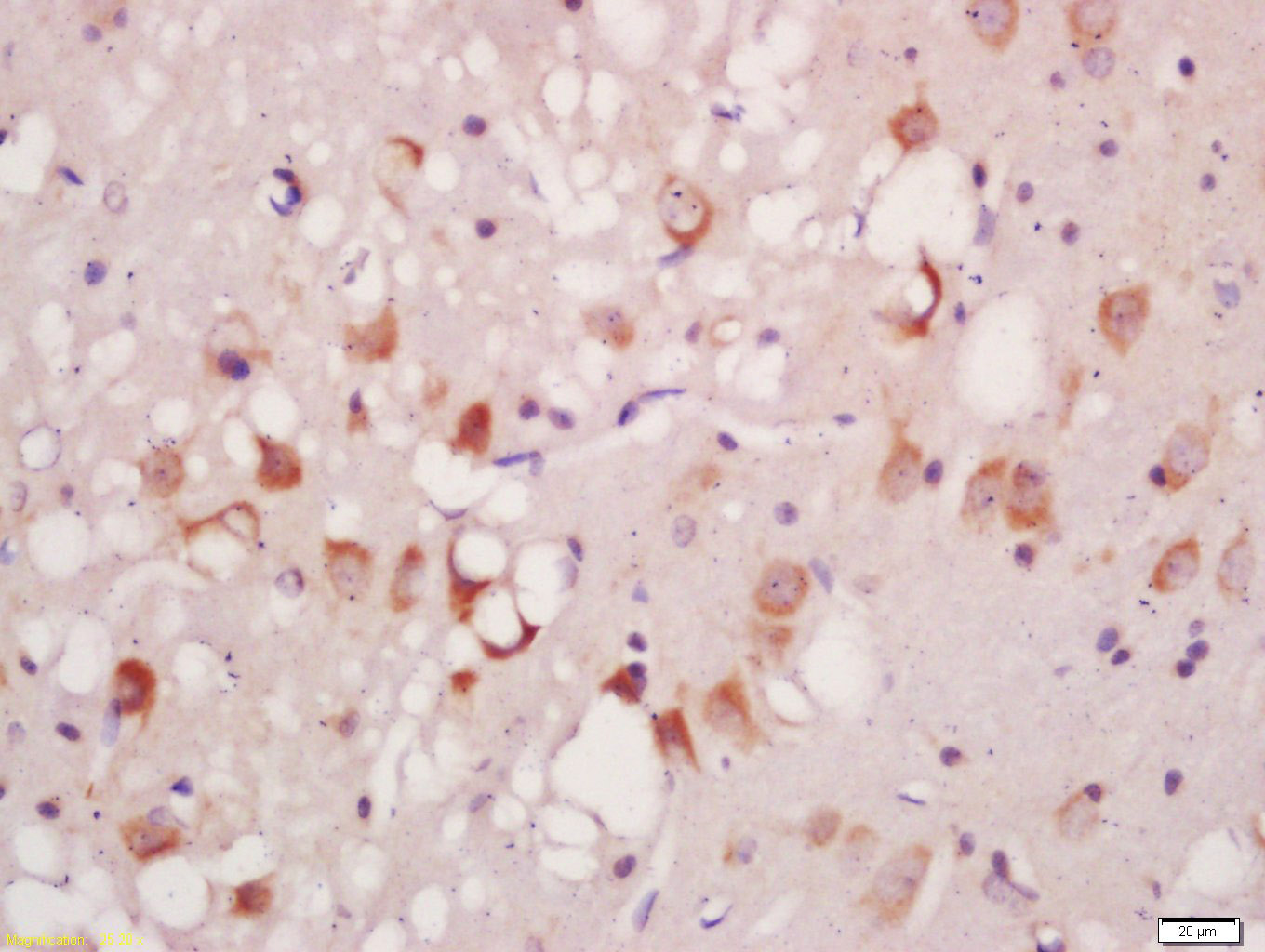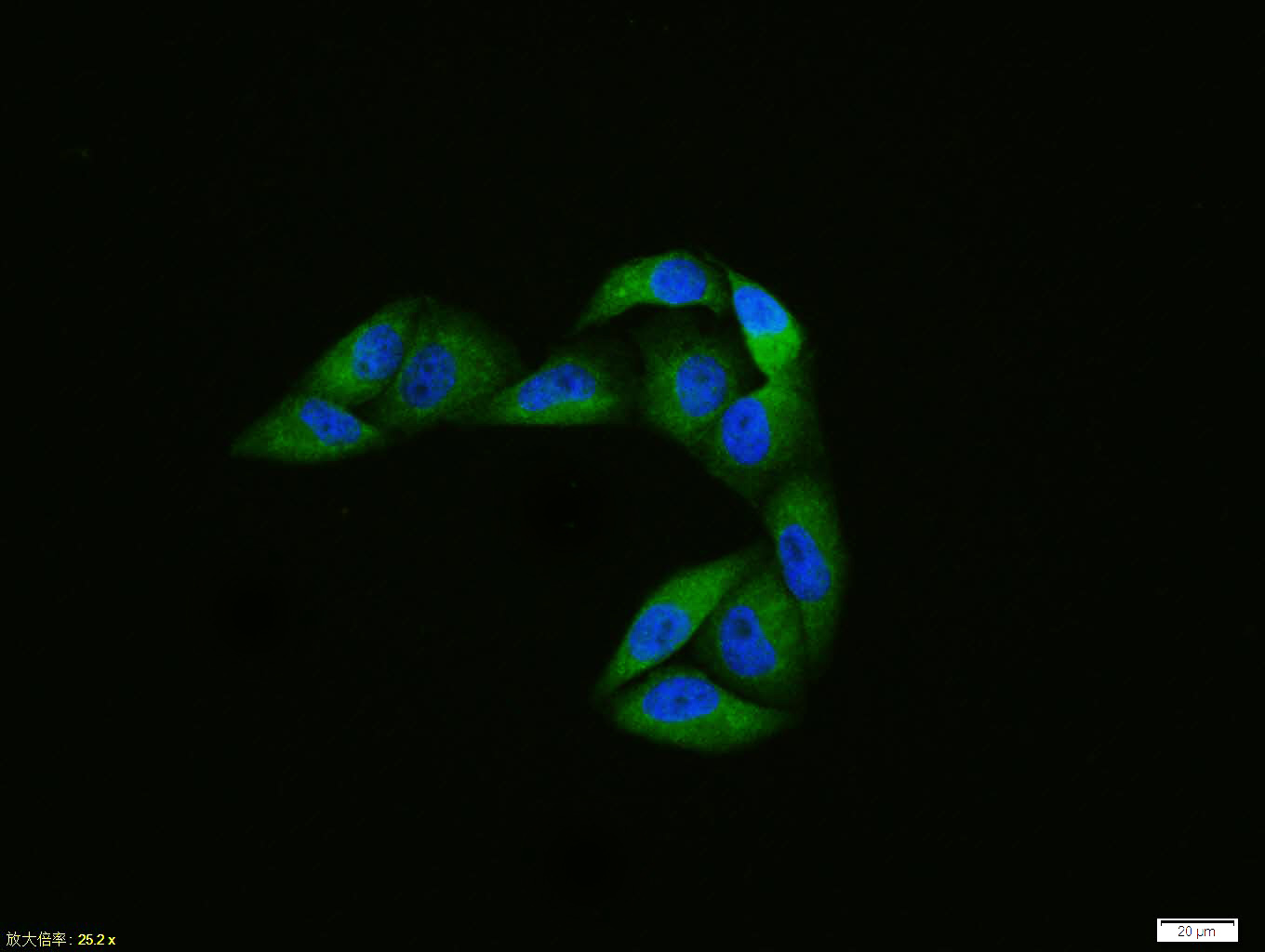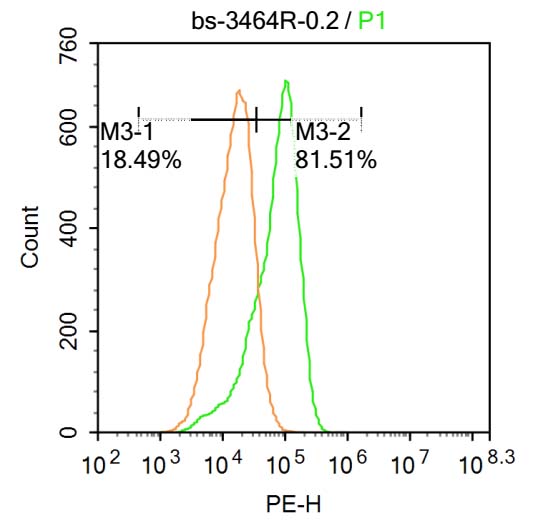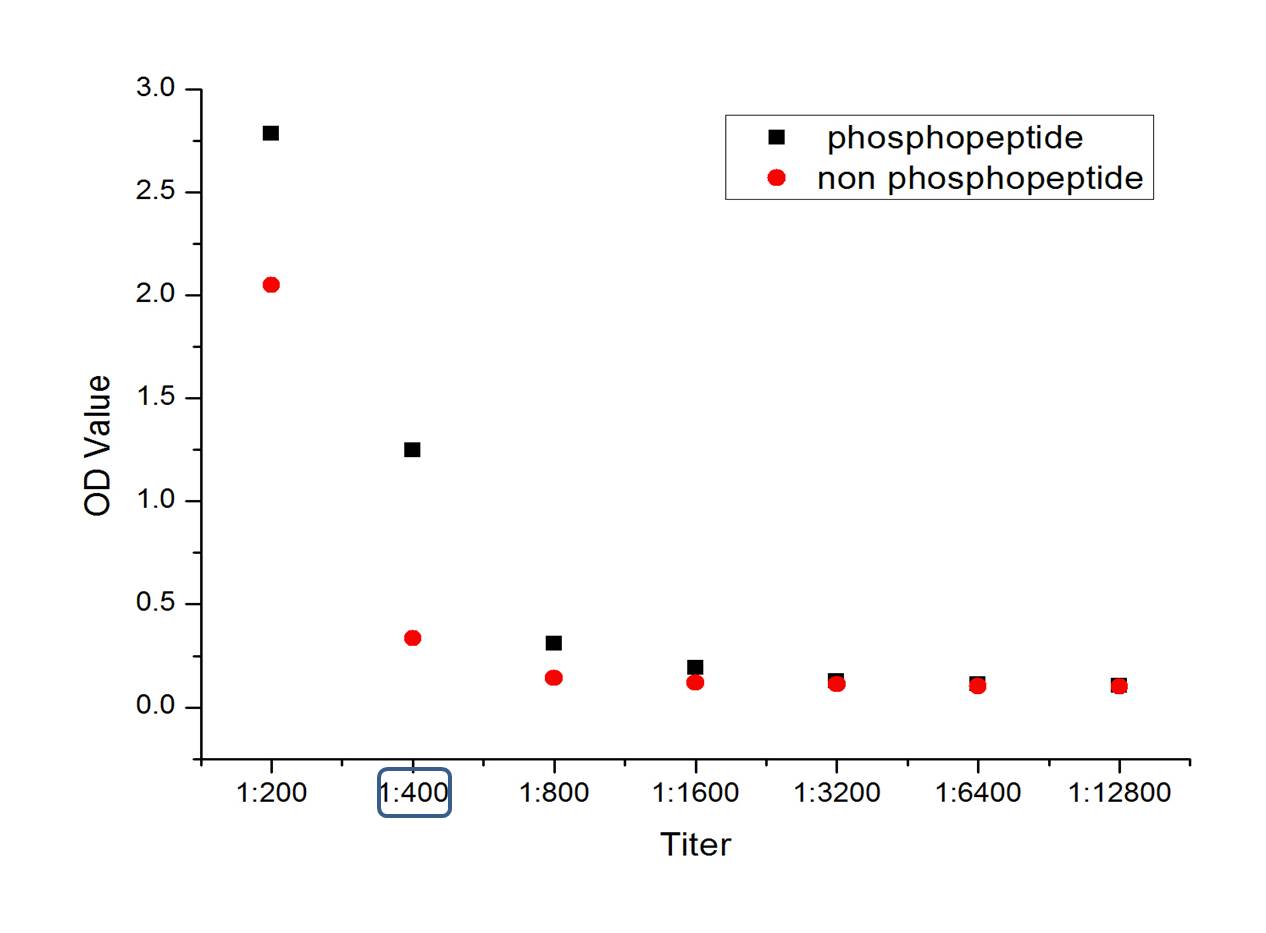
Rabbit Anti-Phospho-ATG1 (Ser556)antibody
ULK1 (phospho S556); ULK1 (phospho Ser556); p-ULK1 (Ser556); ATG 1; ULK1; ATG1; ATG1A; Serine/threonine protein kinase ULK1; Serine/threonine protein kinase Unc51.1; ULK 1; Unc 51 (C. elegans) like kinase 1; UNC 51; Unc 51 like kinase 1; Unc-51-like kinas
View History [Clear]
Details
Product Name Phospho-ATG1 (Ser556) Chinese Name 磷酸化自噬相关蛋白1抗体 Alias ULK1 (phospho S556); ULK1 (phospho Ser556); p-ULK1 (Ser556); ATG 1; ULK1; ATG1; ATG1A; Serine/threonine protein kinase ULK1; Serine/threonine protein kinase Unc51.1; ULK 1; Unc 51 (C. elegans) like kinase 1; UNC 51; Unc 51 like kinase 1; Unc-51-like kinase 1; Unc-51 like kinase 1 (C. elegans); UNC51; ULK1_HUMAN; Serine/threonine-protein kinase ULK1; Autophagy-related protein 1 homolog; hATG1. literatures Product Type Phosphorylated anti Research Area Cell biology immunology Signal transduction Apoptosis transcriptional regulatory factor Kinases and Phosphatases Immunogen Species Rabbit Clonality Polyclonal React Species Human, Mouse, Rat, (predicted: Pig, Horse, ) Applications WB=1:500-2000 ELISA=1:5000-10000 IHC-P=1:100-500 IHC-F=1:100-500 Flow-Cyt=3ug/test ICC=1:100 IF=1:100-500 (Paraffin sections need antigen repair)
not yet tested in other applications.
optimal dilutions/concentrations should be determined by the end user.Theoretical molecular weight 116kDa Cellular localization cytoplasmic Form Liquid Concentration 1mg/ml immunogen KLH conjugated Synthesised phosphopeptide derived from human ATG1/ULK1 around the phosphorylation site of Ser556: LH(p-S)AP Lsotype IgG Purification affinity purified by Protein A Buffer Solution 0.01M TBS(pH7.4) with 1% BSA, 0.03% Proclin300 and 50% Glycerol. Storage Shipped at 4℃. Store at -20 °C for one year. Avoid repeated freeze/thaw cycles. Attention This product as supplied is intended for research use only, not for use in human, therapeutic or diagnostic applications. PubMed PubMed Product Detail ULK1 belongs to the serine/threonine protein kinase family. It is involved in axon growth and plays an essential role in neurite branching during sensory axon outgrowth. Knockdown of ULK1 results in impaired endocytosis of nerve growth factor (NGF), excessive axon arborization, and severely stunted axon elongation indicating that ULK1 mediates a non clathrin coated endocytosis in sensory growth cones. Knockdown of ULK1 also inhibits the autophagic response. It appears to act as a convergence point for multiple signals that regulate autophagy, and in turn interacts with a large number of autophagy related (Atg) proteins.
Function:
Serine/threonine-protein kinase involved in autophagy in response to starvation. Acts upstream of phosphatidylinositol 3-kinase PIK3C3 to regulate the formation of autophagophores, the precursors of autophagosomes. Part of regulatory feedback loops in autophagy: acts both as a downstream effector and negative regulator of mammalian target of rapamycin complex 1 (mTORC1) via interaction with RPTOR. Activated via phosphorylation by AMPK and also acts as a regulator of AMPK by mediating phosphorylation of AMPK subunits PRKAA1, PRKAB2 and PRKAG1, leading to negatively regulate AMPK activity. May phosphorylate ATG13/KIAA0652 and RPTOR; however such data need additional evidences. Plays a role early in neuronal differentiation and is required for granule cell axon formation.
Subunit:
Interacts with GABARAP and GABARAPL2. Interacts (via C-terminus) with ATG13/KIAA0652. Part of a complex consisting of ATG13/KIAA0652, ULK1 and RB1CC1. Associates with the mammalian target of rapamycin complex 1 (mTORC1) through an interaction with RPTOR; the association depends on nutrient conditions and is reduced during starvation.
Subcellular Location:
Cytoplasm, cytosol. Preautophagosomal structure. Note=Under starvation conditions, is localized to puncate structures primarily representing the isolation membrane that sequesters a portion of the cytoplasm resulting in the formation of an autophagosome.
Tissue Specificity:
Ubiquitously expressed. Detected in the following adult tissues: skeletal muscle, heart, pancreas, brain, placenta, liver, kidney, and lung.
Post-translational modifications:
Autophosphorylated. Phosphorylated under nutrient-rich conditions; dephosphorylated during starvation or following treatment with rapamycin. Under nutrient sufficiency phosphorylated by MTOR/mTOR, disrupting the interaction with AMPK and preventing activation of ULK1 (By similarity). In response to nutrient limitation, phosphorylated and activated by AMPK, leading to activate autophagy.
Similarity:
Belongs to the protein kinase superfamily. Ser/Thr protein kinase family. APG1/unc-51/ULK1 subfamily.
Contains 1 protein kinase domain.
SWISS:
O75385
Gene ID:
8408
Database links:Entrez Gene: 8408 Human
Entrez Gene: 22241 Mouse
Omim: 603168 Human
SwissProt: O75385 Human
SwissProt: O70405 Mouse
Unigene: 47061 Human
Unigene: 271898 Mouse
Unigene: 24509 Rat
Atg1是一种丝氨酸/苏氨酸蛋白激酶。Atg1的激脢活性是CVT信号传导通路以及細胞自噬所必須的。Atg1可以和一些执行Autophagy的蛋白相互作用,而且有很多调控細胞自噬的信号传导通路汇集在Atg1。因此Atg1可能是一个可以调控細胞自噬很多步驟的一个调节关键点。但在较高等的真核生物中,Atg1的角色仍然不是很清楚。通过目前的研究已经比较了解Autophagy可以导致细胞的死亡,但是如何导致死亡的分子机制还不清楚,有待于进一步研究。Product Picture
Antigen retrieval: citrate buffer ( 0.01M, pH 6.0 ), Boiling bathing for 15min; Block endogenous peroxidase by 3% Hydrogen peroxide for 30min; Blocking buffer (normal goat serum,C-0005) at 37℃ for 20 min;
Incubation: Anti-Phospho-ATG1(Ser556) Polyclonal Antibody, Unconjugated(SL3464R) 1:200, overnight at 4°C, followed by conjugation to the secondary antibody(SP-0023) and DAB(C-0010) staining
Hela cell; 4% Paraformaldehyde-fixed; Triton X-100 at room temperature for 20 min; Blocking buffer (normal goat serum, C-0005) at 37°C for 20 min; Antibody incubation with (Phospho-ATG1 (Ser556)) polyclonal Antibody, Unconjugated (SL3464R) 1:100, 90 minutes at 37°C; followed by a conjugated Goat Anti-Rabbit IgG antibody at 37°C for 90 minutes, DAPI (blue, C02-04002) was used to stain the cell nuclei.Blank control:A549.
Primary Antibody (green line): Rabbit Anti-Phospho-ATG1(Ser556) antibody (SL3464R)
Dilution: 1μg /10^6 cells;
Isotype Control Antibody (orange line): Rabbit IgG .
Secondary Antibody : Goat anti-rabbit IgG-PE
Dilution: 3μg /test.
Protocol
The cells were fixed with 4% PFA (10min at room temperature)and then permeabilized with 20% PBST for 20 min at room temperature. The cells were then incubated in 5% BSA to block non-specific protein-protein interactions for 30 min at at room temperature .Cells stained with Primary Antibody for 30 min at room temperature. The secondary antibody used for 40 min at room temperature. Acquisition of 20,000 events was performed.
References (0)
No References
Bought notes(bought amounts latest0)
No one bought this product
User Comment(Total0User Comment Num)
- No comment






 +86 571 56623320
+86 571 56623320
 +86 18668110335
+86 18668110335

